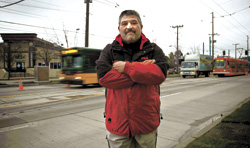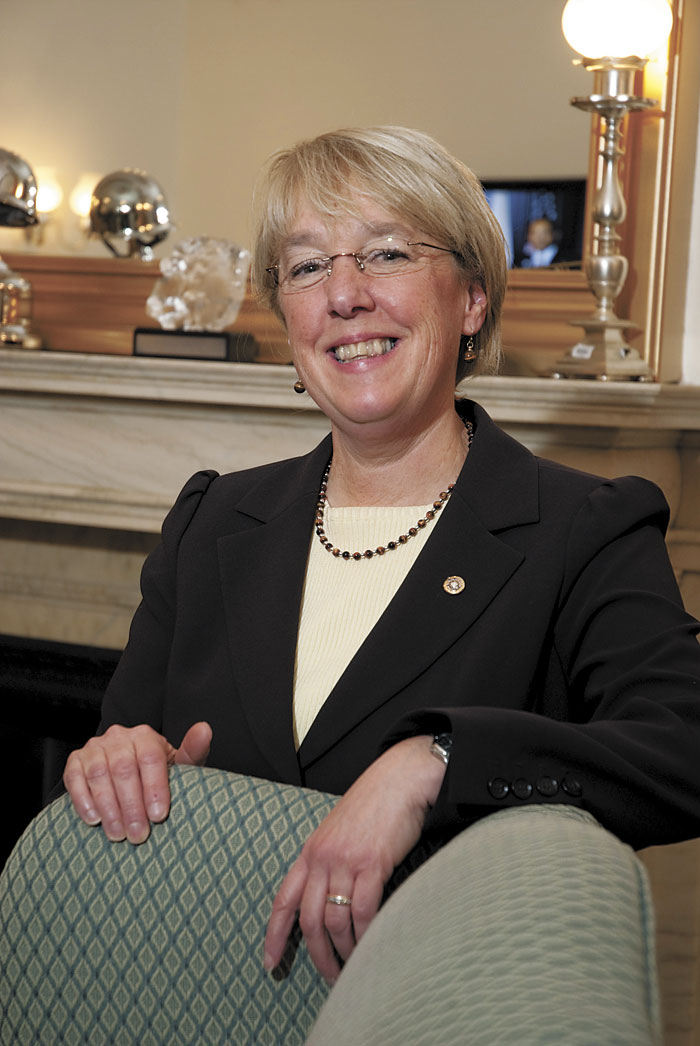The party starts today for the opening of Seattle’s new toy, the South Lake Union Streetcar. But a number of business owners along the route aren’t feeling so festive, still smarting from more than a year of construction and hundreds of thousands of dollars in lost sales.
“They’ve crushed our business, especially our lunch business, and it’s still happening,” says Jay Farias, owner of Stix Pizza & Brewing Co., located on Lake Union near the northern terminus of the route.
“You can’t print what I have to say,” adds Brian Still, general manager of nearby Daniel’s Broiler. “It was pretty traumatic as far as the construction itself. They put a fence up around my whole building; it had a pretty severe impact for business.”
Still wouldn’t say how much business has been down, but he said it’s starting to come back and adds that he’s hopeful for the future. But Farias, who says Stix’s receipts were down 35 percent to 40 percent during the height of construction, notes that his business is only back up 10 percent now that the dust has started to settle.
“We’re still struggling; we have to see a dramatic increase from this transit system,” he says. “The [city’s] feeling is that it’s short-term pain for long-term gain. That may be so, but I hope that we’re still here after the trolley’s up and running.”
Buoyed by what they perceive as developers’ decision to change the neighborhood’s name from Cascade to South Lake Union, and amused by the unfortunate acronym that’s created if one refers to the line as the South Lake Union Trolley, some business owners prefer to call the streetcar the “S.L.U.T.”—and have been buying “Ride the S.L.U.T.” T-shirts from Kapow! Coffee.
But whatever you want to call it, the streetcar, which shares a lane with traffic, runs in a 2.6-mile loop from the southern tip of Lake Union to Westlake Center, stopping 11 times along the way. It took about 15 months to complete construction, and though the crayon-colored, boxy, Czech-made cars have been doing practice runs for the past couple of weeks, there have still been construction-related street closures.
Less than two weeks before today’s opening, BluWater Bistro owner Bart Evans says he was still charting new ways to work due to blocked-off streets and intermittent fencing. While he understands the promise of living through the mess is that his business will get a boost once the streetcar starts carrying carloads of customers past his restaurant, he remains skeptical.
“Honestly, in the long run, the net effect is going to be zero,” he says. “I don’t know if you’ve looked at a map of it, but it doesn’t really go anywhere. I just can’t imagine someone living on Eastlake taking the trolley to freakin’ where?”
Bruce Miller, manager of the boating supply mecca West Marine, notes that his business is still off by 20 percent, and that the problem is that people have a “long memory.” “We had 100,000 cars going by everyday that couldn’t get in,” Miller says. “That hurts us badly. We’re a destination-based store. Because of that, customers are choosing other locales.”
Though he thinks West Marine will benefit little from tourists riding the streetcar, Miller’s hopeful that people staying on boats on Lake Union will find it a convenient way to get to the store. “But we’re going to have to do a great deal of promotion to make that happen,” he says.
If it wasn’t bad enough that they struggled to keep their doors open this summer, Stix brewmaster Tom Munoz says the real rub came when he received a sponsorship pitch in the mail from the city to spend thousands of dollars for ad space related to the new transit toy. “I find it ironic that first you stifle our business, then you ask for money,” he says. “There was no bargaining.”
“You’d think the city would come forth with some sort of partnership with business owners [instead],” adds BluWater’s Evans. “It’s a little annoying.”
But Michael Mann, deputy director of the Office of Policy and Management and the mayor’s lead on the streetcar project, says sponsorships are necessary to make the project pencil out: 25 percent of the streetcar’s $2 million annual operating expenses are slated to come from these advertisements, so discounts were not an option.
“The City Council set high expectations that we build and operate without tapping into general funds,” says Mann. “We have had to be entrepreneurial to accomplish that.”
Evans says BluWater grudgingly paid $2,000 for a yearlong spot in the glossy brochure that will be available inside the streetcar and at businesses along the line. “It was about keeping up with the Joneses,” he says. (According to the mayor’s office, 26 businesses have signed up to be in the brochure. All told, the city has collected about 85 percent of its sponsorship goal to date, which includes bigger-ticket sponsorships for entire streetcars and stations.)
Property owners also helped pay for about half of the $52 million it cost to finance the S.L.U.T. by agreeing to an increase of about 2 percent in property taxes. Evans says this has already translated into an annual increase of about $6,000 in rent for BluWater. Ditto for Stix, says Farias, to the tune of about $1,000 per month.
The cherry on top of their discontent is the fact that, unlike construction for Sound Transit, which has the Rainier Valley Community Development Fund to assist impacted businesses along Martin Luther King Way, there was no mitigation offered by the city for South Lake Union.
“Some compensation would’ve been nice,” says West Marine’s Miller. “We’re very happy to finally have things begin to get back to normal,” he says.
Mann notes that while there are always going to be a few grumbles, the neighborhood gets an important amenity for their trouble (i.e., the S.L.U.T.), and stresses that only 12 of the 700 property owners surveyed voted against taxing themselves for the streetcar. Those publicly declaring their support include executives from neighborhood heavyweights like Group Health, Fred Hutchinson Cancer Research Center, the Vance Corporation, and Vulcan Inc. (which because of the number of properties it owns in the area will pay about one quarter of the total additional taxes.)
The mayor’s office also touts the fact that the streetcar may not end with the South Lake Union line. The 2008 budget includes $350,000 to study the feasibility of additional routes that would connect places like Capitol Hill and the University District. And a study released last week by the Streetcar Alliance, a group of business owners, associations, and agencies, imagines financing options for adding five routes: Westlake Avenue to Broadway, Seattle waterfront to Interbay, Yale Avenue to the University District, Seattle waterfront to the International District, and Harrison Street to Seattle Center.
Over at Kapow!, just a few steps east of where the trolleys are parked—in an unfinished structure dubbed the “S.L.U.T. hut”—co-owner Jeremiah St. Georges has been able to recoup some of the business he lost during construction by selling “Ride the S.L.U.T.” T-shirts for $15 apiece.
One recent rainy morning, a Department of Transportation employee purchased a pink one with his quad latte before heading back to supervise more test runs. Though the acronym may be officially unpopular, St. Georges says people who work for Vulcan and the city are some of his best customers.
Kapow! co-owner Angela Baker, who moved to Seattle years ago after watching a streetcar aid in the prosperity of Portland’s Pearl District, says she’s trying to get excited about the new form of transportation. “I call it the lunch trolley to Westlake,” she says.
St. Georges, who opened Kapow! 10 years ago, says he’s worried less about the construction than about ultimately being priced out of the neighborhood. Adds Baker: “It definitely seems like they’re building it for businesses that aren’t here yet.”






